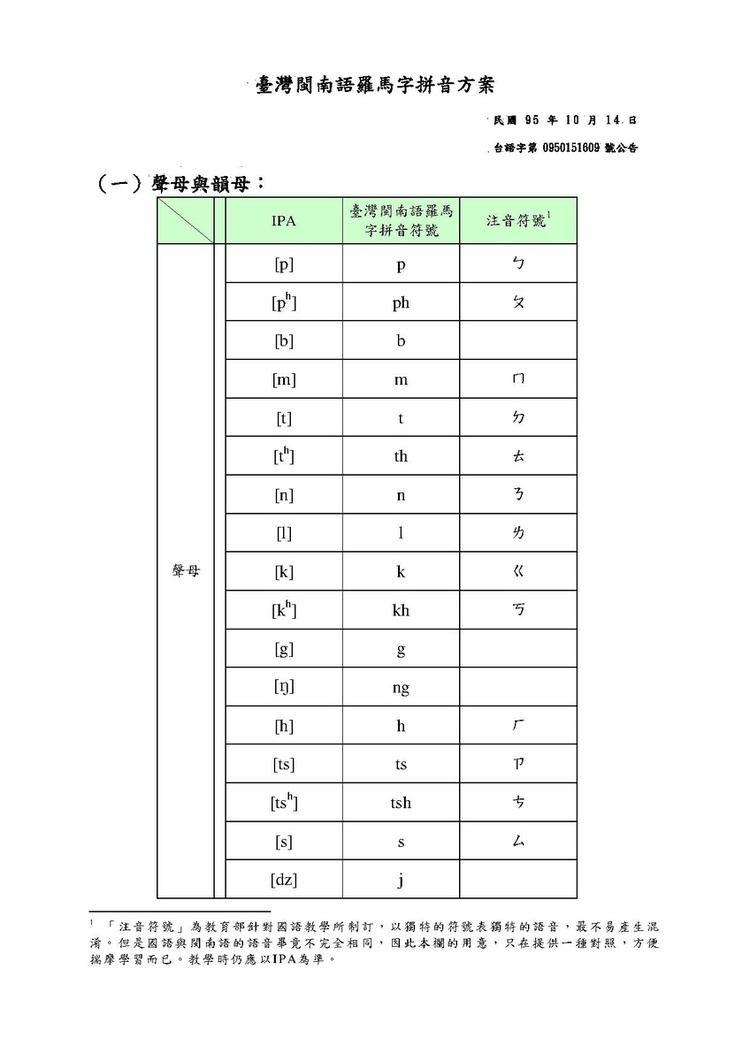Traditional Chinese 臺灣閩南語羅馬字拼音方案 | Simplified Chinese 台湾闽南语罗马字拼音方案 | |
 | ||
Hanyu Pinyin Bopomofo ㄊㄞˊ ㄨㄢ ㄇㄧㄣˇ ㄋㄢˊ ㄩˇ ㄌㄨㄛˊ ㄇㄚˇ ㄘˋ ㄆㄧㄣ ㄧㄣ ㄈㄤ ㄢˋ Gwoyeu Romatzyh Tair'uan Miinnanyeu Luomaazyh Pin'in Fang'ann Wade–Giles T'ai²-wan¹ Min³-nan²-yü³ Lo²-ma³-tzû⁴ P'in¹-in¹ Fang¹-an⁴ | ||
The Taiwanese Romanization System (Taiwanese Romanization: Tâi-uân Lô-má-jī Phing-im Hong-àn, Chinese: 臺灣閩南語羅馬字拼音方案; pinyin: Táiwān Mǐnnányǔ Luómǎzì Pīnyīn Fāng'àn; Pe̍h-ōe-jī: Tâi-ôan Lô-má-jī Pheng-im Hong-àn; often referred to as Tâi-lô) is a transcription system for Taiwanese Hokkien. It is derived from Pe̍h-ōe-jī and since 2006 has been officially promoted by Taiwan's Ministry of Education. It is nearly identical to Taiwanese Language Phonetic Alphabet (TLPA) Romanization for Hakka apart from using ts tsh j instead of c ch j for the fricatives /ts tsʰ dz/.
Contents
Alphabet
Taiwanese Romanization System uses 16 basic Latin letters (A, B, E, G, H, I, J, K, L, M, N, O, P, S, T, U), 7 digraphs (Kh, Ng, nn, Oo, Ph, Th, Ts) and a trigraph (Tsh). In addition, it uses 6 diacritics to represent tones.
Vowels & Rhymes
Tones
A hyphen links elements of a compound word. A double hyphen indicates that the following syllable has a neutral tone and therefore that the preceding syllable does not undergo tone sandhi.
